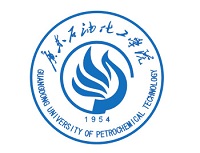1. The Fog Ridge
Introduction:
The Fog Ridge nature reserve ,with a total area of 3534 hectares,is situated in the Daheng town of the south of Xinyi city, Guangdong province. It is a cloud mountain, with a total area of 3534 hectares. There are 29 peaks that are at an altitude of over 1500 meters above the sea level, including the field top (1704 meters), fog ridge top (1423 meters), and other major peaks. Fog Ridge is foggy due to its southeast area affected by the Pacific Ocean climate and its vast temperature variation, foggy weather has won Fog Ridge great reputation among the visitors. The Fog ridge is subtropical, whose temperature ranges from 17 ℃ - 18 ℃. Being the highest peak of the west Guangdong province and the main peak of Fog Ridge, Field peak possesses a spectacular scene and has been regarded as one of the eight sights of Xinyi city. Nearby there are numerous mountains at an altitude of over several kilometers, it remains by far the best well-preserved natural forest vegetation in the west Guangdong province.
Transportation:
a. through vehicle is not available.
b. The roadmap starts from Maoming international hotel
c. Distance: about 31.7 kilometers
d. Self-driving route: Youcheng sixed road—Guanghua middle road—Guanghua north road—high water highway—G207 under the direction of Gaozhou—G207—S307—X629 under the direction of Xinyi city.
2. Hutoushan Waterfront Tourism Distract##
Introduction:
Facing the South bay, backing against the Shuidong economic development zone, adjacent to Shuidong harbor, and being 6 km away from the county, the Hutoushan waterfront is a tourist area which located in Dianbai of South China Sea peninsula and covering an area of 3.73 square kilometers. It is famous as an important part of the charming Shuidong provincial tourism resorts. There is an ideal natural bathing beach which with a length of 12 kilometers and is characterized by white sand and flat surface. Besides, the water is clear, without reef and sharks, temperature of the sea surface is suitable for bath, all of these make it possible to have year-round bath time of more than 280 days. So it is also known as the "South Beidai River". (Beidai River is a famous river of the north China). Hutou mount and Yanjing range which renowned for the so called pearls along the Sea of south China are not only the famous resorts but also the natural observation decks of China. The two mountains, together with abundant sunshine, white sands, waves and forest belts, have displayed a picturesque painting of the South China Sea.
Transportation:
Bus route:
(1)Bus NO.301—Bus NO.301: about 2 hours and 30 minutes
(2) Bus NO.308—Bus NO.309: about 2 hours and 40 minutes
(3) Bus NO.303—Bus NO.210: about 2 hours and 40 minutes
(4) Bus NO.301: about 2 hours and 30 minutes
(5) Bus NO.309: about 2 hours and 40 minutes
Self-driving route:
a. Distance: about 29.5 km.
b. Youcheng sixed road—Guanghua middle road—Guanghua north road—Gaoshui highway—G325—Turn left under the direction of Maogang government—s280—driving along the third road of coastal port into X635—Green sea Road
3. Long Slope Ruins of the Ancient City
Introduction:
Having a history of more than 1400 years, Ruins of the Old City is one of the only two provincial key cultural relic protection units in Maoming (another is the "baoguang" tower in Gaozhou ), it is also the relatively old and the only well-preserved ruins of the old city in Guangdong province. According to the countys’ annals of the old city, originally the ancient city is governed by Dianbai Shire and Dianbai County. The Shire was reconstructed in the Southern Liang Dynasty (AD 503-557) and then converted into a prefecture. Consequently, it worked as DianBai County, and originally it was the department that in charge of Gaozhou County.
Transportation:
Self-driving route:
Youcheng sixed Road—Guanghua middle road—Guanghua north road—Gaoshui highway—G207—Gaoliang middle road—Gaoliang east road—Under the direction of Lei Gong Tang, driving into S208 and then drive about 18 miles to get to the destination.
4. Guanshan Temple Group
Introduction:
Guanshan Temple Group is in the Guanshan mountain which located in the west of Gaozhou county, with east to the Jian river, south to the Nangong mountain. The Guanshan mountain has superior geographical position. It is said that during the Yongjia period of the western Jin dynasty. It was called Gods mount because an immortal Taoist who was called Pan had lived in this mountain, it is also known as Shengzhen ridge. There is a Shengzhen temple at the top of the ridge with a stone incense burner. As time went by, the Shengzhen temple disappeared. During the Wanli period, a magistrate called Bangyi Zhang constructed the Guanshan temple. It is said that there is a golden well and a jade well and the Taoist called Pan has practiced alchemy here. When smoke went through the gold well, it became yellow (the well can’t be found today, it is said that it was in the golden hill today).On the other hand, it became white when smoke went through the jade well. After a long time,jade well has disappeared. During the second year of Chongzhen period, people in the towns built the pavilion at the mountain. There are a lot of beautiful and splendid buildings in the temple. Furthermore, there is infinite enchanting scenery around the mountain.
Transportation:
a. Through vehicles are not available, taxis are available
b. Self-driving route:
Guanghua north road—S612— Driving into the G207 Under the direction of Gaozhou county in Gaoshui highway—Guanghai highway— Driving 90 meters along the Yangjiang west road.
5. Baoguang Tower
Introduction:
Baoguang Pagoda, located in the bank of the Jian River, southwest of the Gaozhou urban area, was built in the Ming dynasty, fourth year of Wanli time (1576). It is a nine storeys pavilion style tower with a height of about 65.8 meters and ground floor’s length of 5.72 meters. The tower was built with blue bricks and the Xumi style was applied into the tower base .Each surface of pagoda’s waist parts is embedded by three pieces of granites of anaglyph pattern. Each embossment is 1.45 meters long, 0.55 meters high. The embossment possesses various patterns, there are patterns of auspiciousness and wealth, good fortune, bright prospects and the unique banana figure of Gaozhou, etc. Between the two embossments there is a bamboo-shaped anaglyph which is 0.55 meters high and 0.28 meters wide. Each surface of the foundation bed is inset with a Tuota giant embossment with a height of 0.55 meters and a length of 0.38 meters. It seems like the Tuota giant is lifting up the tower, which gives visitors a sense of security.
Transportation:
Self-driving route:
Driving into X612 from Maoming city—Gaoshui highway—driving into the G207 under the direction of Gaozhou county—Guanghai highway—Driving 760 meters along the Jiangxi road to get to the destination.
6. Xian Ancestral Temple
Introduction:
Xian Ancestral Temple, located in the Renmin road of Gaozhou, the north of Pan Zhou Park of Gaozhou, is a scenic spot of national A level. It was built in Ming Dynasty, the fourteenth year of Jiajing period (1535 AD).
During 43rd year of Jiajing period and the Tongzhi period of the Qing dynasty, it was successively reconstructed. It is the largest temple in Gaozhou county. Xian ancestral temple,with a total depth of 49.5 meters and a total width of 13.4 meters, covers an area of 826.3 square meters, has three parts .It consists of front hall, middle hall and main hall. The temple is made up of cornices brackets bricks and woods and is featured by sumptuous decoration, in form of coloured drawing, pile model, sculpture and other forms of arts, representing striking national style and local features.
Transportation:
a. Through trains are not available.
b. Self-driving route: Gaoshui road—driving into the G207 under the direction of Gaozhou county—Gaoliang west Road—driving along the of Gaoliang east Road into S113—driving about 13 km to get to the destination.
7. The Root Litchi Cultural Tourism Zone
Introduction:
The Litchi Cultural Tourism Zone is adjacent to the urban area of Gaozhou which is 47 km away from the national famous natural resort of East Hutou Shan and the "Chinese first beach",25 km away from the Maoming railway station, 102 kilometers away from the Zhanjiang airport. The connection between Gaozhou and the Pearl River Delta region will be enhanced by the Guangzhou-Zhanjiang expressway, the expanded provincial highway of Gaozhou to Yangchun, Gaozhou to Yulin, and the Luoyang-zhanjiang railway. Besides, there are approximately several hours ride from Gaozhou to Guangzhou. Working as litchi cultural tourism zone of Gaozhou and country’s leading litchi production base, root litchi cultural tourism zone has kept attracting numerous tourists for its unique charm.
Transportation:
Self-driving route:
Youcheng sixed road—Youcheng seventh road—Youcheng eighth road—Youcheng ninth road—Gaoshui highway—S372—X634—X628
8. Gao Liang Ling
Introduction:
Starting from the Gaozhou country, all the way northbound along the bank of Stone bone river for about 20Km, a soaring and magnificent mountain that has picturesque scenery will come into sight, that is the so called Gao Liang Range. According to the government records of Gaozhou, the original name was Sorghum, because it offers people its charming summer scenery with fresh air and clear weather and is characterized by towering peaks, it was then renamed Gao liang. With the combination of rare stones and various fruits, the Gaoliang Range is a scenic spots which renowned for its extraordinary landscape. Ascending the stairs from the root of the mountain, the steep winding path is filled with blooming wisteria and flowers.
The sighing sound of the wind in the pines will make you feel fresh. There is a splendid temple in the mountainside called Madame Xian Temple, which is a famous religious tourist attraction of Maoming.
Transportation:
Self-driving route:
Youcheng sixed road—Guanghua middle road—Guanghua north road-Gaoshui highway- G207—Gaoliang west road—Gaoliang middle road—Gaoliang east road—S280








































